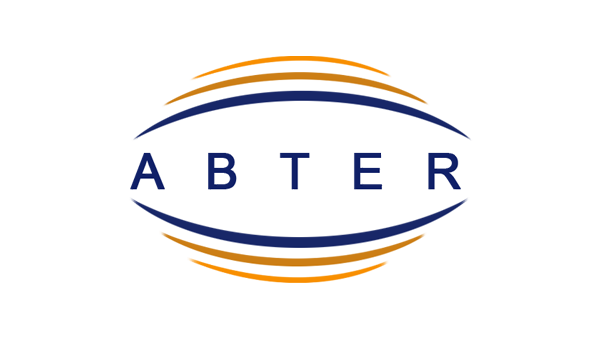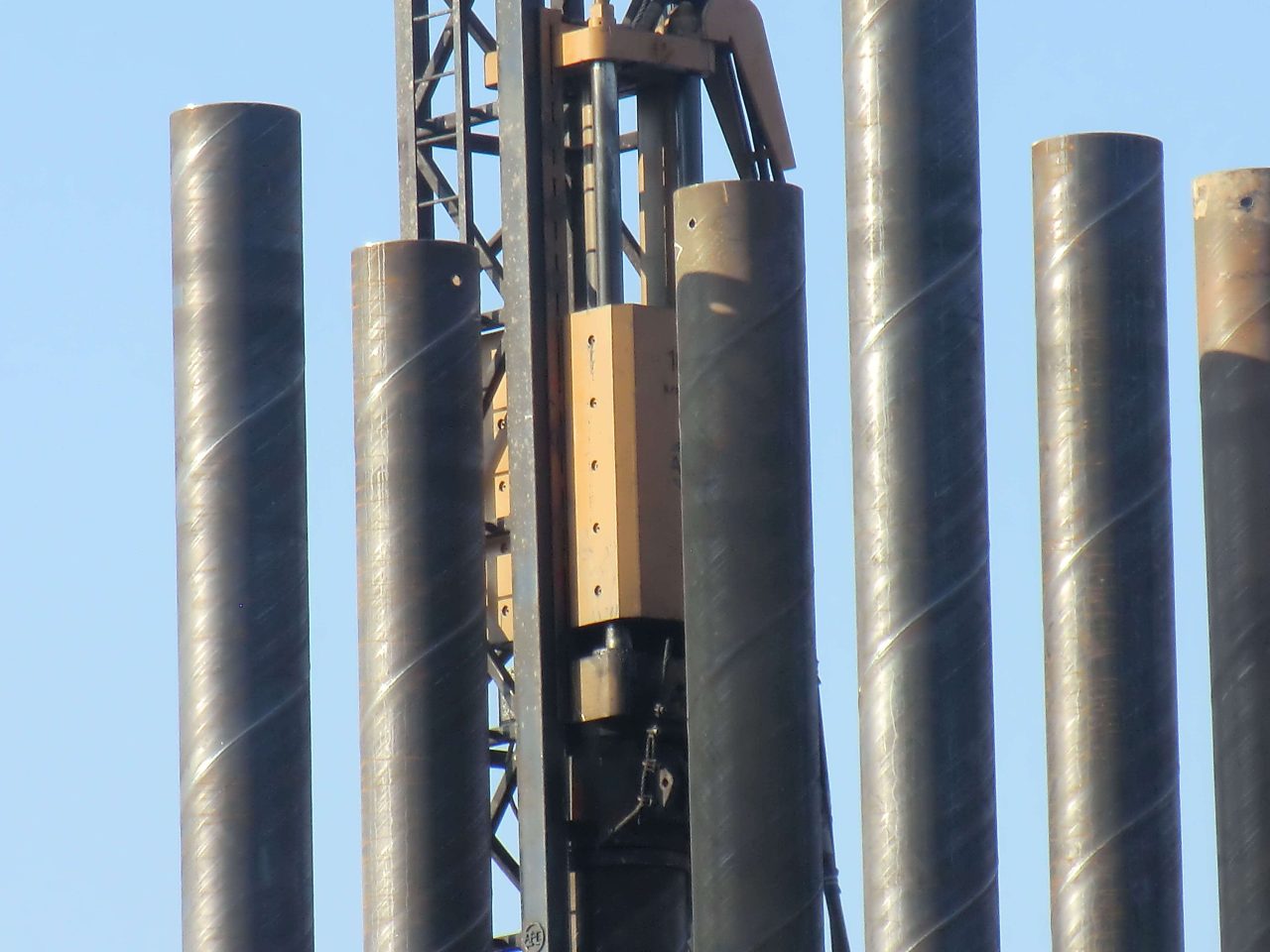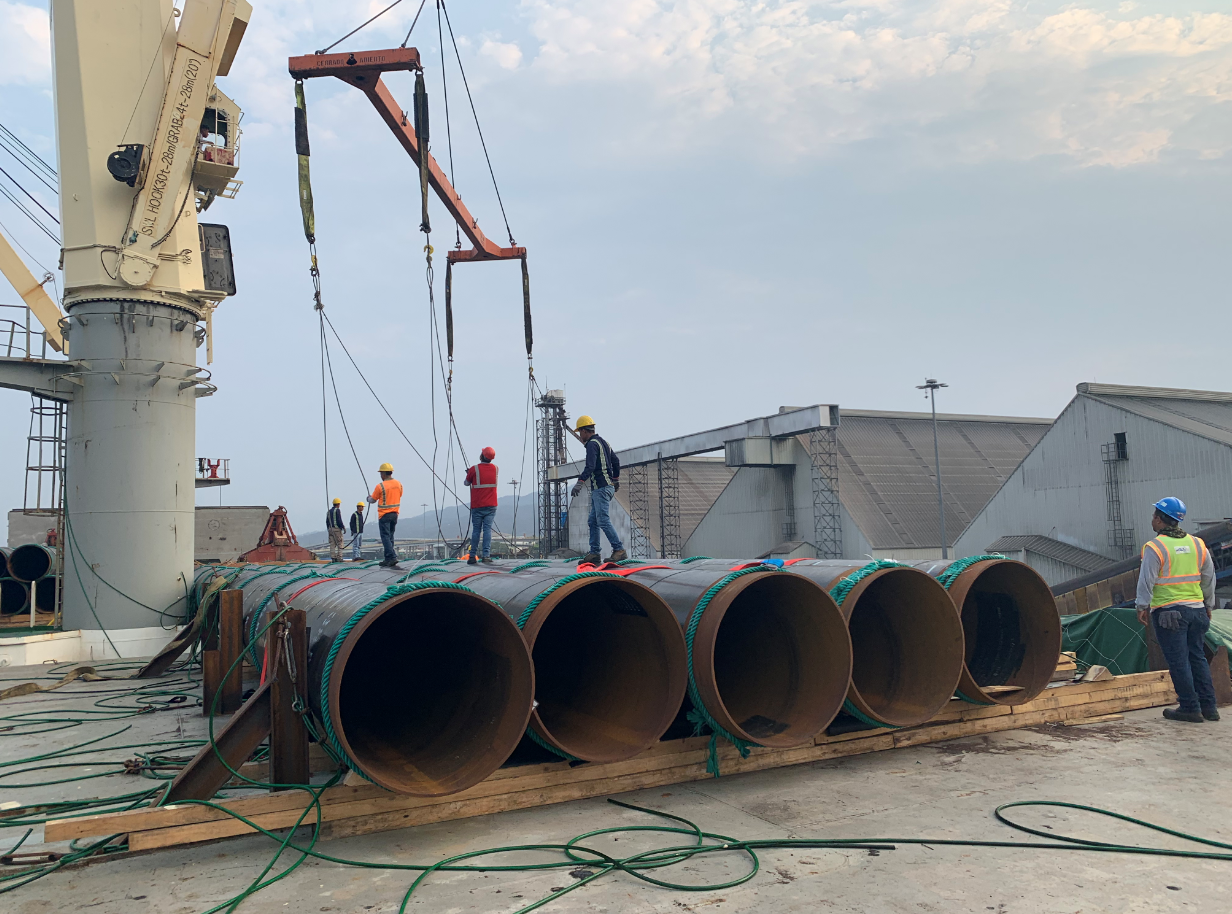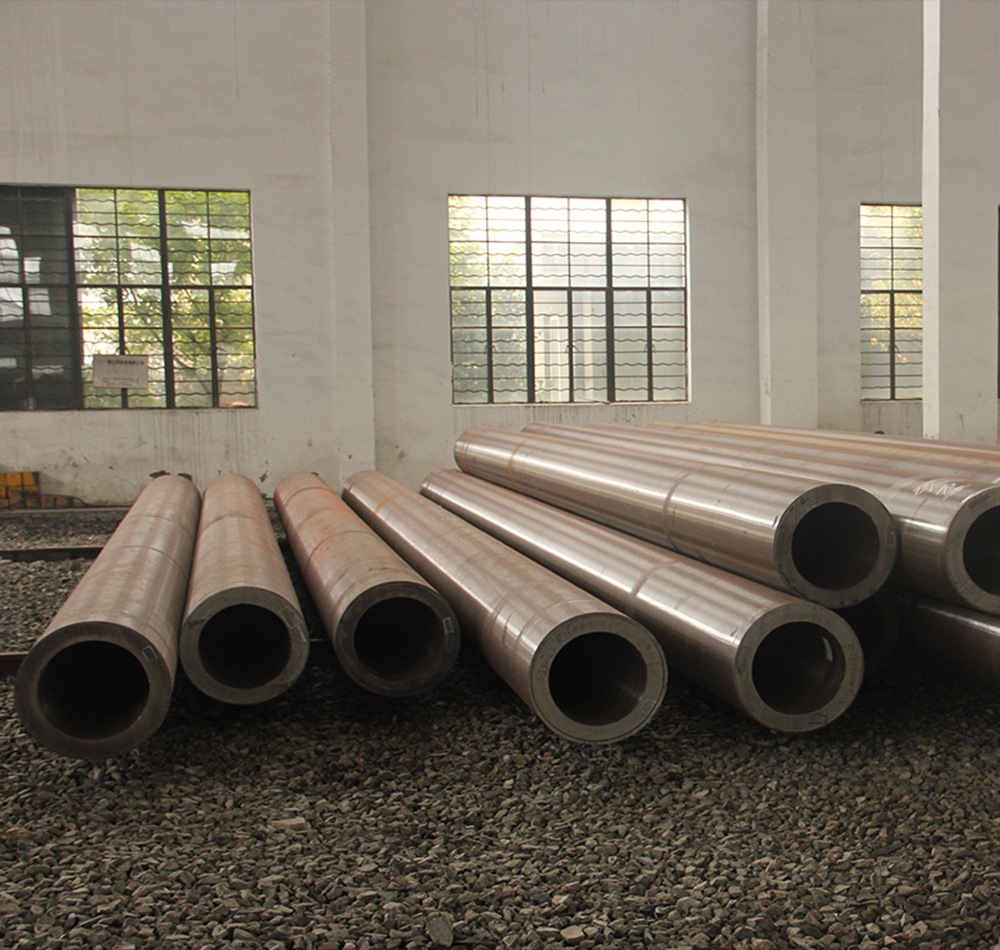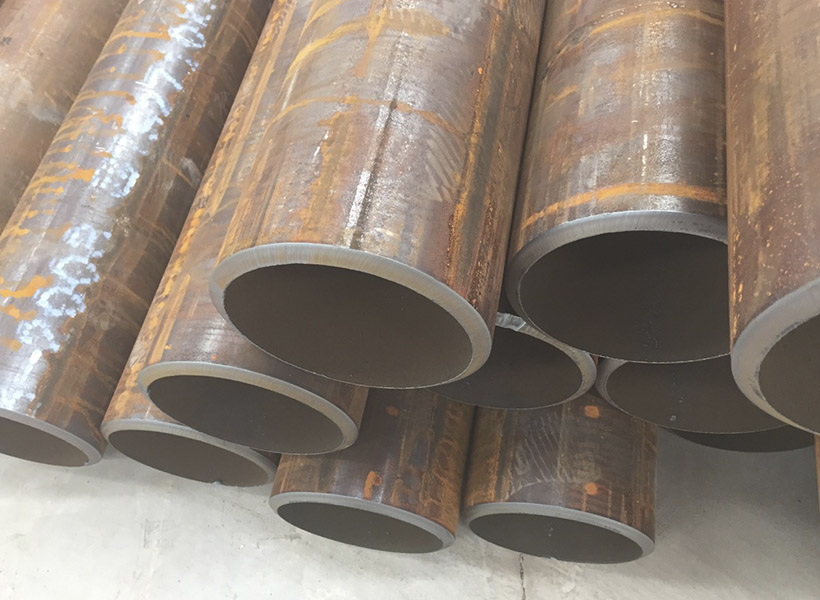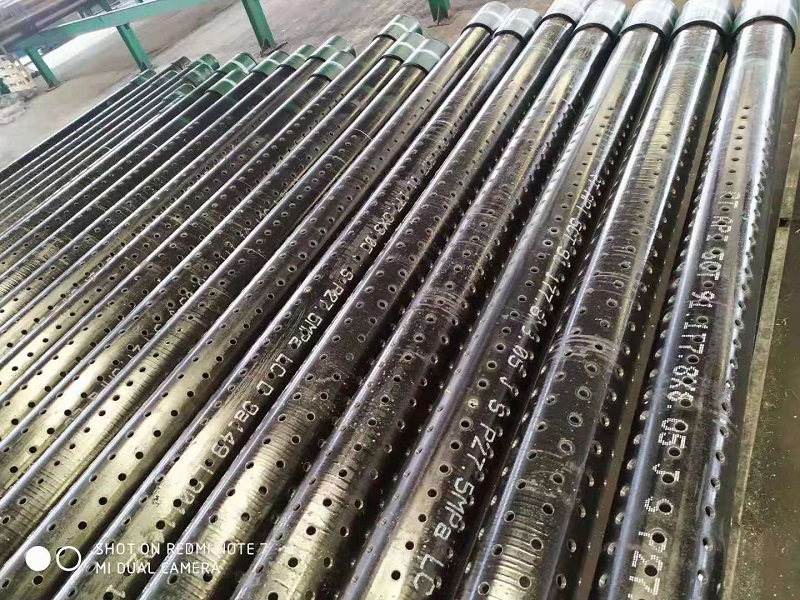Induction Pipe Bending
¿Qué es la flexión por inducción??
Induction bending is a precise and efficient method of bending pipes and tubes using localized heating. This technique employs an electric coil to generate an electromagnetic field that heats a specific section of the pipe or tube. Once the material reaches the appropriate temperature, it is drawn through a bending mechanism to achieve the desired angle and radius. The heated section is then rapidly cooled, typically using water or air quenching, to set the bend in place.
What Material Can Be Used?
Induction bending can be applied to a wide range of materials, incluido:
- Acero carbono: Commonly used in construction, tuberías, y fabricación.
- Acero inoxidable: Preferred in industries requiring corrosion resistance, such as food processing and pharmaceuticals.
- Aleación de acero: Used for high-strength applications, including aerospace and automotive sectors.
- Aluminio: Chosen for its lightweight properties and used in transportation and structural applications.
- Copper and Copper Alloys: Utilized in plumbing, electrical, y sistemas HVAC.
- Titanio: Employed in aerospace, medical devices, and high-performance engineering applications.
The versatility in material compatibility makes induction bending suitable for diverse industrial needs.
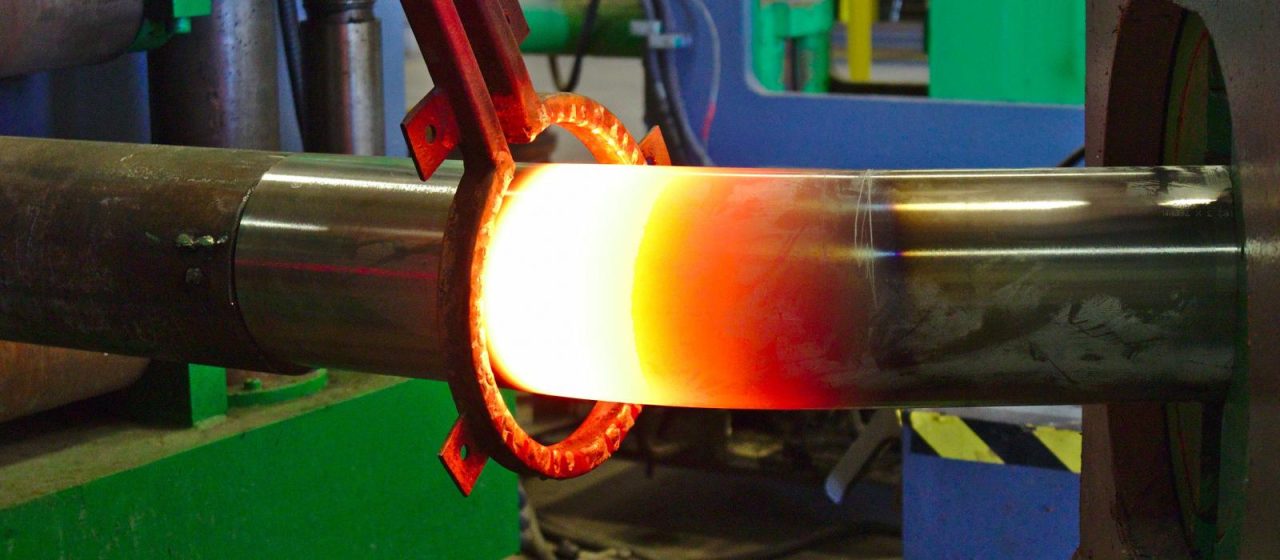
Why Use Induction Bending?
Induction bending offers several advantages over traditional bending methods:
- Precision and Accuracy: The localized heating ensures minimal deformation and high precision in achieving the desired bend angle and radius.
- Eficiencia: The process is fast, reducing production times and increasing throughput.
- Calidad: Induction bending produces smooth, wrinkle-free bends with minimal thinning or flattening of the pipe walls.
- Versatilidad: Suitable for a wide range of materials and pipe sizes.
- Económico: Reduces the need for welding and fabrication of multiple segments, lowering labor and material costs.
- Reduced Residual Stresses: The controlled heating and cooling process minimizes residual stresses, enhancing the structural integrity of the bent pipes.
- Beneficios ambientales: The process is energy-efficient and can be performed with minimal waste and emissions.
Some of the Main Benefits of Induction Bending Include:
- High Precision: Induction bending allows for tight tolerances and repeatable accuracy, essential for critical applications.
- Smooth Bends: The technique produces smooth, aesthetically pleasing bends without ripples or kinks.
- Material Integrity: Maintains the mechanical properties and metallurgical structure of the material.
- Flexibilidad en el diseño: Enables complex bending geometries that are difficult to achieve with other methods.
- Reduced Welding: Decreases the need for weld joints, which can be points of weakness in a pipeline.
- Ahorro de costes: Lower labor and material costs due to fewer welding and fabrication requirements.
- Time Efficiency: Faster production times compared to traditional bending methods.
- Seguridad: The process is safer for operators due to the controlled heating environment.
Some of the Most Common Industries Where Induction Bending is Needed Are:
- Petróleo y gas: Used extensively in pipeline construction and offshore applications for bending pipes to precise angles.
- Power Generation: Critical in the production of pipelines and conduits for nuclear, thermal, and hydroelectric power plants.
- Automotive: Essential for manufacturing exhaust systems, roll cages, and structural components.
- Aerospace: Used to create complex tubing systems and structural components that require high precision and strength.
- Construcción: Applied in the creation of structural elements, handrails, and architectural features.
- Shipbuilding: Utilized in forming pipes and conduits for marine applications, including ballast systems and engine exhausts.
- HVAC: Induction bending is used to manufacture ductwork and piping systems for heating, ventilación, and air conditioning.
- Alimentos y bebidas: Employed in creating sanitary piping systems that require smooth, clean bends.
- Pharmaceuticals: Used in the production of piping systems that require high cleanliness standards.
- Procesamiento químico: Applied in the creation of pipelines and processing equipment that must withstand corrosive environments.
Detailed Overview of Induction Bending
1. Process Description
Induction bending involves several key steps:
- Heating: The pipe or tube is positioned within an induction coil, which generates an electromagnetic field. This field induces eddy currents within the material, causing it to heat up rapidly and uniformly along the targeted section.
- Doblamiento: Once the material reaches the desired temperature (typically between 800°C to 1000°C for steels), it is drawn through a bending arm or roller system that applies the required force to achieve the bend.
- Cooling: The bent section is immediately quenched using water or air, which rapidly cools the material and sets the bend. This rapid cooling
El uso de pilotes tubulares en la construcción de cimientos ha sido una opción popular durante muchos años.. Los pilotes tubulares se utilizan para transferir la carga de una estructura a un lugar más profundo., capa más estable de suelo o roca.
Beneficios de las armaduras de tuberías El uso de armaduras de tuberías en la construcción ofrece varias ventajas notables: Resistencia y capacidad de carga: Las armaduras de tuberías son reconocidas por su alta relación resistencia-peso.. Los tubos interconectados distribuyen las cargas uniformemente., dando como resultado una estructura robusta y confiable. Esto permite la construcción de grandes luces sin la necesidad de excesivas columnas o vigas de soporte..
El estándar para tuberías sin costura para el transporte de fluidos depende del país o región en el que se encuentre., así como la aplicación específica. Sin embargo, Algunas normas internacionales ampliamente utilizadas para tuberías sin costura para el transporte de fluidos son: ASTM A106: Esta es una especificación estándar para tubos de acero al carbono sin costura para servicio de alta temperatura en los Estados Unidos.. Se utiliza comúnmente en plantas de energía., refinerías, y otras aplicaciones industriales donde están presentes altas temperaturas y presiones. Cubre tuberías en grados A., B, y C, con propiedades mecánicas variables según el grado. API 5L: Esta es una especificación estándar para tuberías utilizadas en la industria del petróleo y el gas.. Cubre tubos de acero soldados y sin costura para sistemas de transporte por tuberías., incluyendo tuberías para transportar gas, agua, y aceite. Las tuberías API 5L están disponibles en varios grados., como X42, X52, X60, y X65, dependiendo de las propiedades del material y los requisitos de aplicación. ASTM A53: Esta es una especificación estándar para tubos de acero galvanizados en caliente y negros sin costura y soldados utilizados en diversas industrias., incluidas aplicaciones de transporte de fluidos. Cubre tuberías en dos grados., A y B, con diferentes propiedades mecánicas y usos previstos. DE 2448 / EN 10216: Estas son las normas europeas para tubos de acero sin costura utilizados en aplicaciones de transporte de fluidos., incluyendo agua, gas, y otros fluidos. Leer más
Las tuberías sin costura para el transporte de fluidos están diseñadas para resistir varios tipos de corrosión según el material utilizado y la aplicación específica.. Algunos de los tipos más comunes de corrosión que estas tuberías están diseñadas para resistir incluyen: Corrosión uniforme: Este es el tipo de corrosión más común., donde toda la superficie de la tubería se corroe uniformemente. Para resistir este tipo de corrosión, Las tuberías suelen estar hechas de materiales resistentes a la corrosión., como acero inoxidable o revestidos con revestimientos protectores. Corrosión galvánica: Esto ocurre cuando dos metales diferentes están en contacto entre sí en presencia de un electrolito., lo que lleva a la corrosión del metal más activo. Para prevenir la corrosión galvánica, Las tuberías pueden estar hechas de metales similares., o pueden aislarse entre sí mediante materiales o revestimientos aislantes. Corrosión por picadura: Las picaduras son una forma localizada de corrosión que ocurre cuando áreas pequeñas en la superficie de la tubería se vuelven más susceptibles al ataque., conduciendo a la formación de pequeños hoyos. Este tipo de corrosión se puede prevenir utilizando materiales con alta resistencia a las picaduras., como aleaciones de acero inoxidable con molibdeno añadido, o aplicando recubrimientos protectores. Corrosión por grietas: La corrosión por grietas ocurre en espacios estrechos o espacios entre dos superficies., semejante Leer más
Cribas de alambre tipo cuña, también conocido como pantallas de alambre de perfil, Se utilizan comúnmente en diversas industrias por sus capacidades de detección superiores.. Están construidos con alambre de forma triangular.,
2 7/8En J55 K55, la tubería de revestimiento de pozo perforado es uno de los principales productos de acero que fabricamos., se pueden usar para agua, aceite, campos de perforación de pozos de gas. Los espesores se pueden suministrar desde 5,51 a 11,18 mm según la profundidad del pozo del cliente y las propiedades mecánicas requeridas.. Normalmente están provistos de conexión roscada., como NUE o EUE, que será más fácil de instalar en el sitio. La longitud de los tubos de revestimiento perforados de 3 a 12 m está disponible para las diferentes alturas de las plataformas de perforación del cliente.. El diámetro del orificio y el área abierta en la superficie también se personalizan. Los diámetros de agujero más populares son 9 mm., 12milímetros, 15milímetros, 16milímetros, 19milímetros, etc..
